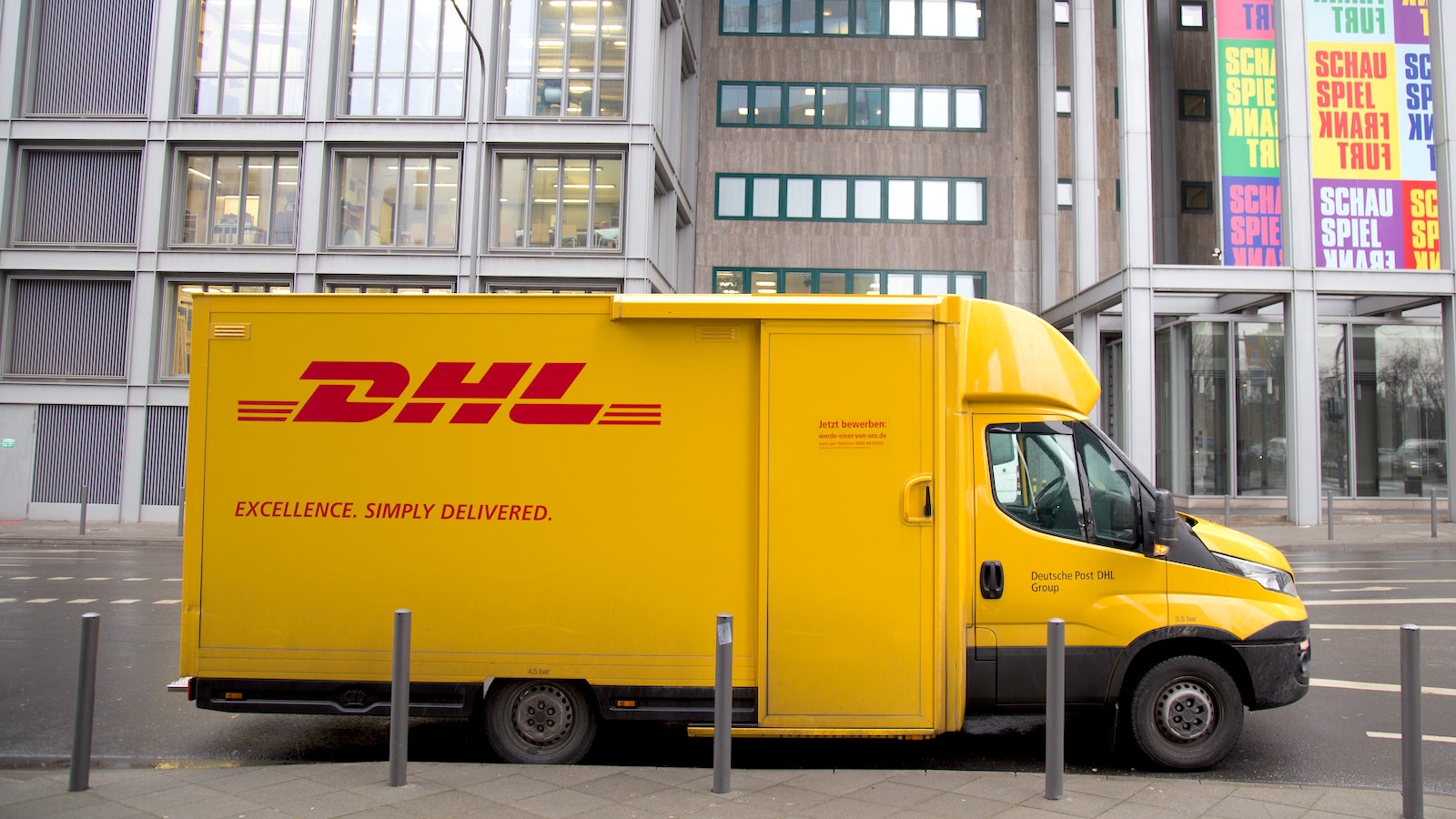Table of Contents
** Minutes
Understanding dock to stock for ecommerce
Dock to stock processes and procedures
When you think of inbound and outbound logistics, an image like the above may come to mind. Once replenished inventory or new goods arrive at a warehouse, the receiving team accepts, logs, and moves the inventory to the appropriate inventory storage location.
Dock to stock may seem pretty straightforward — products are received at the loading dock and put away in the warehouse to be stored until an order is placed by a customer. This can be a relatively easy process when you’re first starting out as an ecommerce business, but as you grow, it becomes more complex.
When your company was first beginning, the procedures used to receive and stock incoming inventory may be simple (e.g., inventory is sent to your home and you keep it in the original boxes).
Over time, this will no longer be efficient as your business has more orders, SKUs, and may even expand into a warehouse of your own, or several warehouses. You will need to dedicate more time and resources into your dock to stock processes, and seek to improve it over time.
In this article, you will learn the importance of dock to stock for ecommerce, the four steps of the dock to stock process, and the different ways you can improve your procedures to become more efficient.
What you’ll learn:
- What is dock to stock?
- Understanding dock to stock for ecommerce
- Dock to stock processes and procedures
- Implementing a WMS to improve dock to stock procedures
- How 3PLs manage dock to stock
What is dock to stock?
Dock to stock (DTS) begins when a warehouse receives goods at a loading dock and ends once the inventory has been stored (e.g., on racks, pallets, shelves, or in bins).
Efficiency starts at the loading dock when a truck unloads the freight shipment(s), thus the processes put into place to receive and stow products are important in the ecommerce logistics world.
The DTS logistics operation encompasses a series of steps that determine warehouse efficiency:
- Receiving inventory
- Inspecting goods
- Updating stock levels
- Storing inventory
These comprehensive steps must be done right to set fulfillment operations up for success.
Understanding dock to stock for ecommerce
The dock to stock process is important for all ecommerce brands, whether they manage a warehouse or outsource to a third-party logistics (3PL) company, who would handle the DTS process on your behalf.
From how a business receives new inventory from a supplier, manufacturer, or distribution center, to how goods are stowed will impact other areas of the retail supply chain, including inventory management, picking and packing, and shipping.
As an ecommerce company first begins, the DTS process may be as simple as boxes arriving on your doorstep at home and the products being placed in your living room. It is relatively easy to manage at first since SKU and order volumes are likely low.
Once the company begins to grow, and more orders are placed or product lines expand, the dock to stock procedures can be an arduous task. Not only is it a lot of work to lease a warehouse and invest in fulfillment infrastructure, but it’s also challenging to scale warehousing operations, including DTS, which leads to stock control issues and higher operational costs.
The goal of dock to stock is to unload, verify, and store inventory efficiently and accurately, as well as make sure all inventory is accounted for. It’s easier for businesses to get this wrong if they don’t have set procedures or a checklist to follow to mitigate errors. This results in unaccounted for or lost inventory, which can impact accurate inventory levels and inventory accounting.
Many brands face difficulties in scaling these warehouse inventory management operations because they don’t have the resources and technology needed to ensure inventory accuracy. There is much more to dock to stock than expected, which can become overwhelming to a business owner.
This is one of the leading reasons companies outsource the entire fulfillment process to a third-party like ShipBob. Working with a third-party logistics (3PL) company helps you scale by focusing on other areas of your business.
Dock to stock processes and procedures
Dock to stock sets you up for success across all downstream fulfillment operations. The four steps to the dock to stock process are all equally important, and the procedures put in place help ensure the correct items and quantities are being delivered and stored correctly. Here’s an overview of a standard dock to stock process:
Receiving inventory
The receiving of inventory refers to the acceptance of incoming stock. If you manage a warehouse, the warehouse receiving staff meets the shipper at the loading dock and unloads the necessary cargo. The receiving staff should be standing by to discuss questions or concerns regarding the shipment with the delivery driver including the proper documentation such as a bill of lading (BOL).
Ideally, truck beds should be packed back-to-front in the reverse order of the delivery schedule so that warehouse workers can unload their inventory immediately without having to move other cargo out of the way.
Depending on the size and volume of the cargo, unloading sometimes requires heavy lifting equipment such as forklifts and pallet jacks.
If you outsource your order fulfillment to a 3PL, you will most likely have to fill out a Warehouse Receiving Order (WRO) or similar documentation and schedule a delivery appointment to book an inbound dock door.
This will make sure they know which products they will be receiving and how many units. It also helps them plan ahead for labor and to ensure they have dock space, and also stay organized and timely with receiving. By following their processes, they can start fulfilling your orders more quickly and efficiently.
“On the supply chain side, I just throw in what we placed at the factory into a WRO in the ShipBob dashboard, and I can see how many units we have on-hand, what’s incoming, what’s at docks, and so on. I can see all of those numbers in a few seconds, and it makes life so much easier.”
– Harley Abrams, Operations Manager of SuperSpeed Golf, LLC
Inspecting goods
As the inventory is unloaded from the truck, the warehouse staff checks the contents of each delivery, including the quantity, integrity of seals, product codes and SKUs, and the overall condition to ensure that what’s in the boxes matches what is listed on the WRO or what was expected to hit their docks.
Inspecting, counting, and confirming inventory can be time-consuming. There are a few ways that you can avoid hours at the loading dock. Some warehouses require staff to count boxes or pallets, rather than individual items. Some perform random inspections or use an inventory scanner system to automate the process. You can also leave it up to a 3PL to take care of this process, as they are experts in logistics.
Updating stock levels
Once the items have been inspected, you must then update the stock levels so you have an accurate count of your inventory. Sometimes you will get the entire order in one shipment, and other times you will only get a partial order, so it’s easy to make mistakes during this step.
Partial arrivals can be normal, as the inventory may be traveling from overseas and even cross several modes of transportation. You just need to mark what has arrived and account for what is yet to hit the dock.
Managing stock levels without an inventory tracking process in place will lead to many issues down the road throughout the order fulfillment process. Having an inventory management system will give you inventory reports and real-time inventory on stock levels, making the likelihood of an error much less, or the ability to troubleshoot much easier.
Storing inventory
Once all inventory is unloaded and inspected, the final step in the warehouse receiving process is organizing and storing new inventory — which should be conducive to the warehouse setup.
If you own or lease a warehouse, your logistics staff will complete all documentation and verification, including adding the received inventory’s information into the warehouse management system or manually tracking it.
Depending on the size and quantity of products, inventory can be stored either on a palette, a shelf, or a bin. If you partner with a 3PL, it’s up to their fulfillment staff to store your inventory in the most efficient and cost-effective way to optimize your carrying costs.
Implementing a WMS to improve dock to stock procedures
Before technology became the norm in the logistics industry, deliveries that were received on the dock were noted on paper then moved into the warehouse. This system was prone to human error and was difficult to keep inventory and order processing accurately.
A warehouse management system (WMS) is a type of software that monitors and controls daily operations in a warehouse. WMS software improves the dock to stock process and helps ensure inventory is received, stored, picked, packed, shipped, and replenished in the most efficient way possible.
An advanced WMS gives you insights into real-time inventory counts and more accurate numbers for inventory accounting purposes.
When it comes to dock to stock, a warehouse management system will be able to scan in each new box received with the inventory quantities it has. Then, it will be brought to its short-term or long-term inventory storage location, where it will be scanned again, matching each physical movement to a digital record. The WMS will then provide clear instructions on where to stow the items.
Once your new inventory is checked in into an inventory management system and stowed away, you’ll be able to view real-time stock levels and see your inventory numbers change immediately after the dock to stock process.
How 3PLs manage dock to stock
ShipBob is a 3PL that helps business owners optimize their supply chain and fulfill orders. ShipBob understands the importance of a proper dock to stock procedure. Throughout the four steps of DTS, ShipBob implements a number of best practices from receiving and inspecting product to updating stock counts and storing inventory.
ShipBob’s standardized WRO process is designed to cut unnecessary time and complication out of the warehouse receiving process while maintaining high accuracy and documentation by having your inventory sent directly to one of our fulfillment centers (e.g., from your manufacture). Through ShipBob’s dashboard, you can track the status of all WROs and check if the WRO was received on time based on our service level agreements (SLA).
ShipBob enters new inventory using our advanced WMS technology that tracks real-time inventory numbers and updates automatically when new inventory is stored, and this info is sent back to you so you can see every step of the process. We strive for transparency, and you can view our average dock to stock times here (under “Receiving Times”).
ShipBob stores each SKU in a separate, dedicated storage location (either on a shelf, in a bin, or on a pallet, even equipped for lot tracking) so your products are ready to be picked and packed for your end consumer.
“As we’ve grown internationally and in our general over volume, we’ve seen satisfaction go up. ShipBob was a key player and significant partner in helping manage what became unmanageable when we were shipping orders our ourselves.”
– Matt Dryfhout, Founder & CEO of BAKblade
For ecommerce businesses, completing all of these steps can be overwhelming and time-consuming. Owning or leasing your own warehouse is expensive, and easy to under-utilize or outgrow, which can leave you feeling defeated. ShipBob has all of the processes in place to handle dock to stock to boost efficiency and give ecommerce retailers peace of mind.
Have your own warehouse?
Improve your brand’s dock to stock processes with ShipBob’s best-in-class warehouse management system (WMS). By using the same WMS ShipBob uses in its 40+ global fulfillment centers, brands that have their own warehouse can improve workflows, view inventory in real-time, reduce picking, packing, and shipping errors, and scale with ease.
Learn more about how the ShipBob WMS can help your warehouse operations become more efficient by requesting a quote.
Dock to stock FAQs
Here are answers to some of the most frequently asked questions about DTS in warehouses.
How do you measure dock to stock?
To monitor performance of dock to stock, many use the metric dock to stock cycle time as a key performance indicator.
The cycle time starts the moment inbound shipments arrive and stops once that inventory is stocked in your warehouse. Warehouses with a high dock to stock time spend more hours on each task, which ultimately impacts downstream tasks and operations. If you know your warehouse’s receiving timeline or dock to stock cycle time, you can build that into your lead time when calculating reorder point notifications when replenishing inventory.
Why is dock to stock important for ecommerce?
Warehouse efficiency, inventory accuracy, and real-time tracking are all priorities in your ecommerce business’s supply chain. If your dock to stock processes are nonexistent or unorganized, you will find yourself having issues and higher operational costs. It’s important that your ecommerce brand has a highly organized DTS process.
Can you outsource dock to stock processes?
Yes, this is one of several processes that can be taken off your plate. You can outsource DTS processes by partnering with a third-party logistics (3PL) company.
When you outsource to a 3PL, they use many best practices, such as warehouse receiving orders, SLAs, and their warehouse management system and maybe even some warehouse automation. This can help scale your inbound logistics operation and give you peace of mind.



